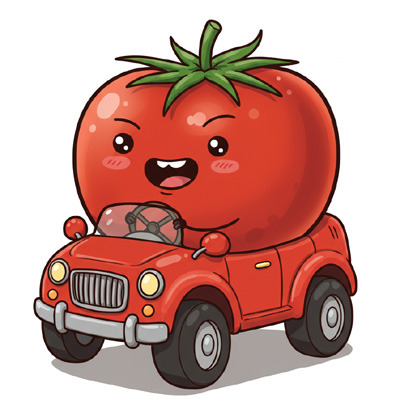Table of Contents
Hot Wheels, the iconic toy cars that have fueled the imaginations of children and collectors for decades, began as a bold idea in the late 1960s. This blog explores the origins, evolution, and cultural impact of these miniature vehicles, tracing their path from a small startup venture to a global phenomenon.
The Spark of an Idea
In 1968, the toy industry was dominated by simple dolls and action figures, but the market for toy cars was ripe for innovation. A co-founder of a major toy company saw an opportunity to create something new: die-cast cars that combined speed, style, and affordability. Inspired by the muscle car culture of the era, the goal was to craft miniature vehicles that captured the sleek designs and vibrant energy of real automobiles.
The name “Hot Wheels” was chosen to evoke speed and excitement. The cars were designed with a unique feature: low-friction wheels and axles that allowed them to roll faster and farther than competitors. This innovation, paired with eye-catching designs, set the stage for a toy that would redefine playtime.

The First 16: A Legendary Launch
In 1968, the first 16 Hot Wheels cars, known as the “Original 16,” hit store shelves. These models were 1:64 scale, small enough to fit in a child’s pocket but detailed enough to spark wonder. Each car was painted in vibrant “Spectraflame” colors, a shimmering finish that gave them a distinctive, almost magical glow. Models like the Custom Camaro, Beatnik Bandit, and Deora drew inspiration from custom cars, hot rods, and concept vehicles.
The Original 16 were more than toys; they were a cultural statement. They reflected the automotive optimism of the 1960s, a time when cars symbolized freedom and individuality. The cars were packaged with a collectible button, adding to their appeal for kids eager to show off their favorites.
Tracks and Innovation
Hot Wheels didn’t stop at cars. The brand introduced flexible orange track sets that allowed kids to build their own racetracks, complete with loops, jumps, and speed boosters. These tracks turned Hot Wheels into an interactive experience, encouraging creativity and competition. The track system was a game-changer, transforming the cars from static collectibles into dynamic tools for storytelling and play.
The engineering behind Hot Wheels was equally impressive. The cars’ lightweight bodies and specially designed wheels ensured they could handle the twists and turns of the tracks. This focus on performance made Hot Wheels stand out in a crowded toy market, appealing to kids who loved action and speed.
Growing Pains and Expansion
By the early 1970s, Hot Wheels faced stiff competition from other toy car brands. To stay ahead, the company experimented with new designs and features, such as glow-in-the-dark cars and vehicles with interchangeable parts. They also began licensing real car designs from manufacturers like Chevrolet and Ford, adding authenticity to their lineup.
The 1980s brought a shift toward bolder, more fantastical designs. Cars like the Cosmic Cruiser and Turbo Streak featured exaggerated shapes and neon colors, reflecting the era’s love for sci-fi and pop culture. Hot Wheels also started producing themed series, such as monster trucks and stunt vehicles, to keep the brand fresh.
The Collector Boom
In the 1990s, Hot Wheels became a cultural juggernaut, thanks in part to a growing collector community. Adults who had grown up with the cars began seeking out rare models, driving demand for limited-edition releases. The company leaned into this trend, producing “Treasure Hunt” cars—rare, specially marked models hidden in regular shipments. Finding one was like striking gold for collectors.
Hot Wheels also partnered with pop culture franchises, creating cars inspired by movies, TV shows, and comic book characters. These collaborations broadened the brand’s appeal, attracting fans of all ages. By the 2000s, Hot Wheels was no longer just a children’s toy; it was a hobby, a passion, and a thriving secondary market.
Digital Age and Beyond
As technology advanced, Hot Wheels embraced the digital world. The brand launched video games, animated series, and apps that brought the cars to life in new ways. Track-building sets evolved with smart technology, allowing kids to control their cars via smartphones or measure their speeds with digital timers.
Hot Wheels also stayed true to its roots, continuing to produce classic die-cast cars while introducing eco-friendly initiatives, such as using recycled materials. The brand’s ability to balance nostalgia with innovation has kept it relevant in a fast-changing world.
Cultural Impact
Hot Wheels has left an indelible mark on popular culture. The cars have appeared in movies, TV shows, and music videos, often as symbols of fun and freedom. They’ve inspired real-world car shows, where enthusiasts build life-sized versions of Hot Wheels designs. The brand’s annual conventions draw thousands of fans, from kids clutching their favorite cars to collectors trading rare models worth thousands of dollars.
Perhaps most importantly, Hot Wheels has sparked creativity across generations. For many, these tiny cars were a gateway to storytelling, engineering, and design. They taught kids to dream big, whether they were building a towering track or imagining their car speeding across a finish line.
Looking Ahead
Today, Hot Wheels remains a beloved brand, with millions of cars produced each year and a fanbase that spans the globe. The company continues to innovate, experimenting with augmented reality, sustainable materials, and new collaborations. Yet, at its core, Hot Wheels is still about the simple joy of a small car zooming down a track, sparking wonder in the hearts of those who play.
The history of Hot Wheels is a testament to the power of imagination and ingenuity. From a bold idea in 1968 to a global icon, these die-cast cars have raced into the lives of millions, proving that even the smallest things can leave a big legacy.
